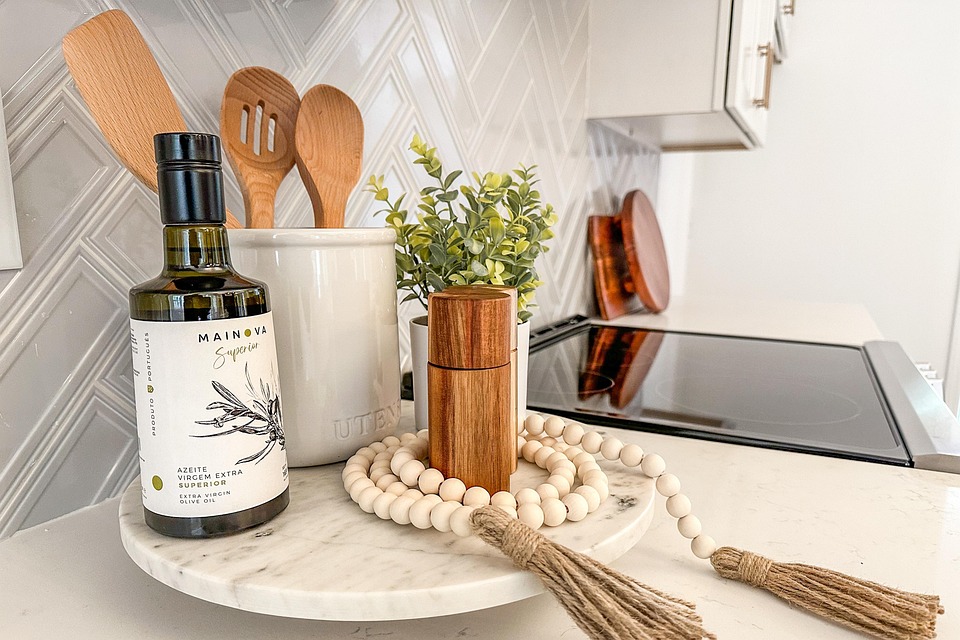The Functional Kitchen: Balancing Aesthetics and Efficiency in Design
In recent years, the kitchen has evolved from a mere cooking space into the heart of the home—a multifunctional hub for cooking, entertaining, and family gatherings. As homeowners increasingly seek to create personalized environments that reflect their lifestyle and taste, the challenge of designing a kitchen that balances aesthetics with efficiency has become paramount.
The Shift in Kitchen Design
Historically, kitchen design was focused primarily on functionality, often sacrificing visual appeal for practicality. However, as culinary culture has grown in prominence, so too has the desire for kitchens that are not only efficient but also beautiful. Modern kitchens now combine sleek lines, contemporary materials, and vibrant colors with functional layouts that enhance user experience.
Key Elements of a Functional Kitchen
-
Ergonomic Layout: A well-designed kitchen adheres to the "kitchen work triangle" concept, which positions the stove, sink, and refrigerator in a triangular layout to minimize movement. This layout allows for seamless cooking experiences. An ergonomic approach takes it a step further, considering the heights of countertops, placement of appliances, and the flow of movement to reduce strain and maximize comfort.
-
Smart Storage Solutions: Effective storage is essential for maintaining an organized and efficient kitchen. Pull-out shelves, deep drawers, and vertical storage racks help utilize space efficiently. Design elements like custom cabinetry can hide away clutter, ensuring countertops stay clean and inviting, while still providing easy access to essentials.
-
Quality Materials: Choosing durable materials that withstand the rigors of cooking while looking good is crucial. Countertops made from quartz or granite offer both functionality and elegance. Similarly, flooring materials should be resilient yet stylish, balancing durability with easy maintenance.
-
Lighting Considerations: Lighting plays a significant role in both the functionality and ambiance of a kitchen. A combination of task, ambient, and accent lighting can enhance usability while creating a warm, welcoming atmosphere. Under-cabinet lighting, pendant lights over islands, and natural light from windows should all be carefully considered to provide a versatile and inviting environment.
- High-Performance Appliances: The integration of modern, energy-efficient appliances not only boosts functionality but enhances the overall design aesthetic of the kitchen. Sleek stainless-steel finishes or custom paneling can help appliances blend into cabinetry, creating a cohesive look.
Aesthetic Elements to Enhance Design
While functionality is critical, visual appeal shouldn’t be overlooked. Here are a few aesthetic principles to consider:
-
Color Scheme: A thoughtful color palette can dramatically influence the mood and style of the kitchen. Neutral tones can promote a calm environment, whereas bold colors can inject energy and personality. The key is to find a balance that reflects personal style while maintaining a harmonious flow with the rest of the home.
-
Personal Touches: Incorporating elements such as artwork, decorative bowls, or unique backsplashes can add character and warmth to the kitchen. Open shelving can showcase beautiful dishware or cookbooks, combining practicality with style.
-
Integrative Design: The kitchen should connect seamlessly with adjacent spaces, especially in open-concept homes. This consideration may lead to similar material usage or color schemes that promote cohesion across living spaces.
- Sustainable Choices: Eco-friendly materials and energy-efficient appliances not only enhance efficiency but also reflect a commitment to sustainability. Incorporating natural elements, such as wooden accents or plants, can add freshness and a sense of life to the design.
Conclusion
The functional kitchen of today is a reflection of the balance between aesthetics and efficiency, designed to suit the modern lifestyle. By strategically planning layouts, selecting quality materials, and infusing personal style, homeowners can create spaces that are not only visually appealing but also practical and user-friendly. As the heart of the home, the kitchen should inspire and facilitate creativity, making cooking a joyful experience rather than a chore. In achieving this balance, the functional kitchen emerges as a true masterpiece of design.



